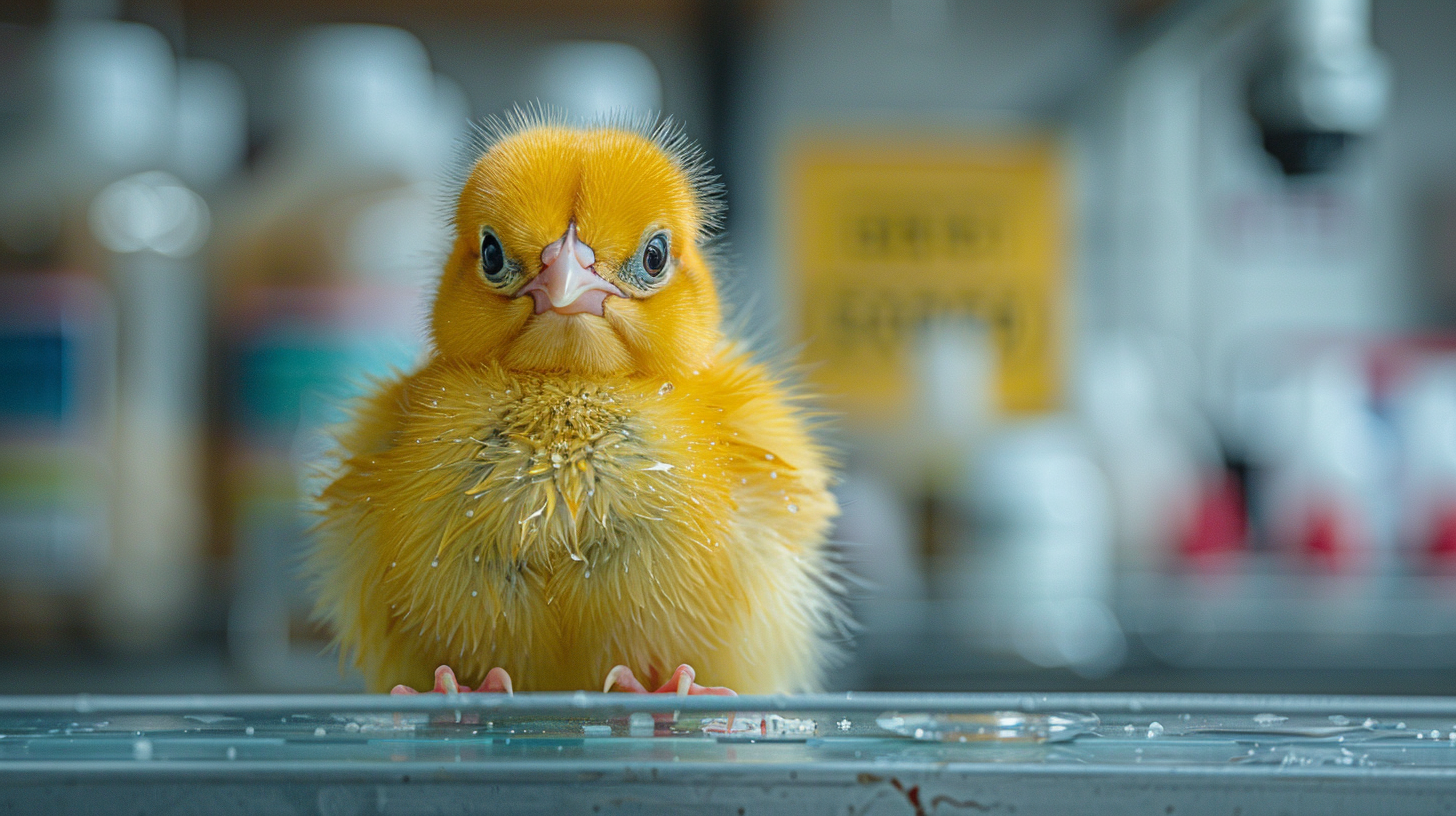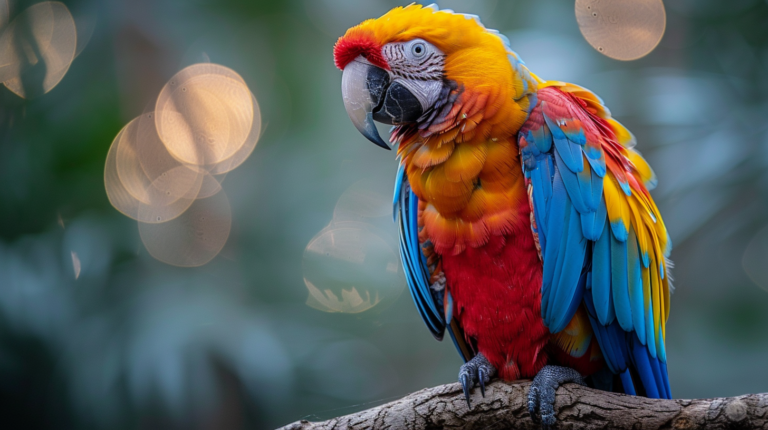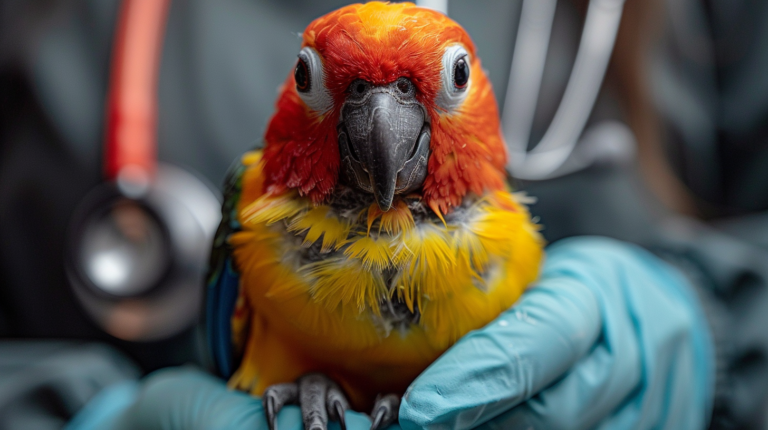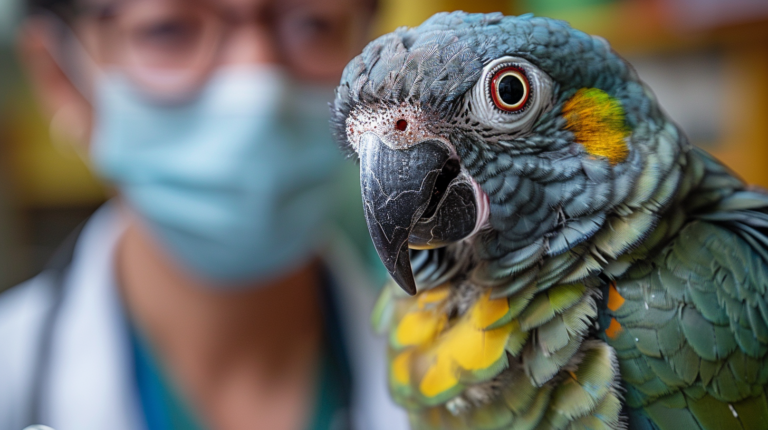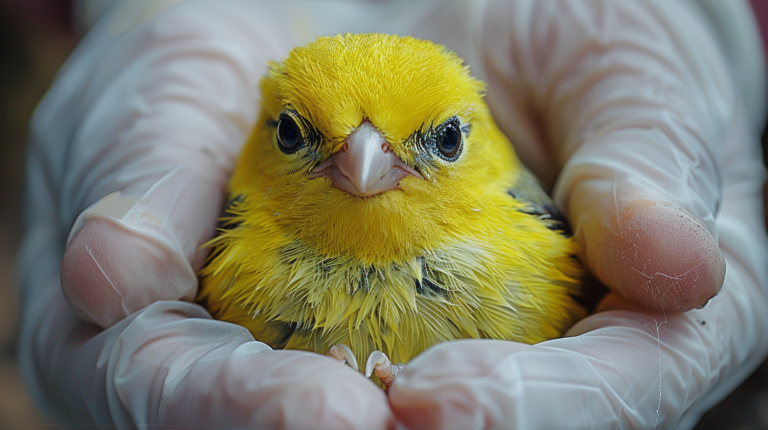Learn the 3 critical warning signs of avian influenza in birds. Expert veterinary insights on symptoms, prevention, and treatment for pet bird owners.
Table of Contents
As a devoted bird owner, you cherish every chirp, flutter, and playful interaction with your feathered companion. However, one of the most serious threats facing both wild and domesticated birds today is avian influenza in birds—a highly contagious viral infection that can devastate entire flocks and pose significant risks to pet birds. Understanding the warning signs of this disease could literally save your bird’s life.
Avian influenza, commonly known as bird flu, affects millions of birds worldwide each year. According to the World Organisation for Animal Health, over 131 million domestic poultry have been affected by highly pathogenic avian influenza since 2021. While wild birds are natural reservoirs for the virus, pet birds including parrots, canaries, finches, and cockatiels are equally susceptible to infection.
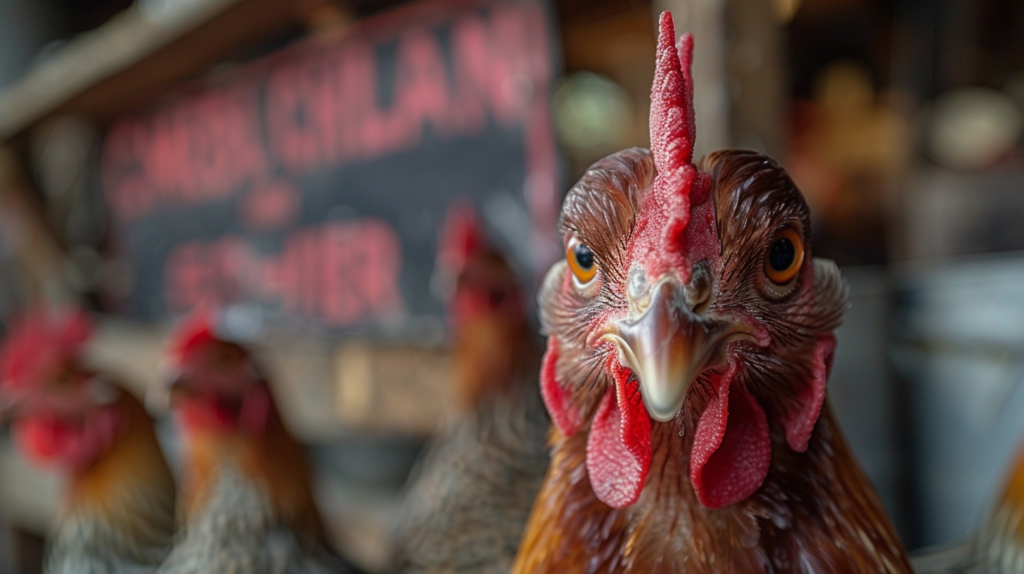
Dr. Sarah Mitchell, a board-certified avian veterinarian with over 15 years of experience, explains: Early detection is absolutely crucial when dealing with avian influenza. The virus can progress rapidly, and birds that receive prompt veterinary care have significantly better outcomes than those where symptoms are overlooked or misidentified.
This comprehensive guide will equip you with the knowledge to recognize the three most critical warning signs of avian influenza in birds, understand the disease’s progression, and take appropriate action to protect your beloved pet.
🐦 Avian Influenza Warning Signs & Symptoms
Click on any row to highlight important information
| Warning Sign Category | Specific Symptoms | Severity Level | Timeline | Action Required |
|---|---|---|---|---|
| Behavioral Changes | Sudden lethargy, reduced activity, loss of appetite, withdrawal from social interaction | High | 1-3 days | Immediate isolation and veterinary consultation |
| Respiratory Distress | Labored breathing, open-mouth breathing, nasal discharge, coughing | High | 2-5 days | Emergency veterinary care within 24 hours |
| Neurological Symptoms | Loss of coordination, head tilting, tremors, seizures, paralysis | Critical | 3-7 days | Immediate emergency treatment required |
| Physical Appearance | Ruffled feathers, drooping wings, swollen eyes, facial swelling | Medium | 1-4 days | Veterinary examination within 48 hours |
| Digestive Issues | Diarrhea, decreased food consumption, regurgitation | Medium | 2-6 days | Monitor closely and consult veterinarian |
| Egg Production Changes | Sudden drop in egg laying, soft-shelled eggs, abnormal egg appearance | Low-Medium | 3-10 days | Document changes and schedule vet visit |
| Vocal Changes | Reduced vocalization, hoarse sounds, complete silence | Medium | 1-5 days | Monitor behavior and seek veterinary advice |
| Sudden Death | Death without obvious prior symptoms (highly pathogenic strains) | Critical | 24-48 hours | Immediate necropsy and flock isolation |
Understanding Avian Influenza: The Silent Threat
Avian influenza is caused by Type A influenza viruses that naturally occur in wild aquatic birds such as ducks, geese, and swans. These viruses are classified into two categories based on their pathogenicity: Low Pathogenic Avian Influenza (LPAI) and Highly Pathogenic Avian Influenza (HPAI). While LPAI typically causes mild symptoms, HPAI can be devastating, with mortality rates reaching up to 100% in some bird populations.
The H5N1 strain, which has dominated recent outbreaks, represents one of the most concerning forms of avian influenza. The Centers for Disease Control and Prevention reports that H5N1 has been detected in over 100 different bird species across North America, making it a persistent threat to both wild and domestic bird populations.
Pet birds can contract avian influenza through several transmission routes. Direct contact with infected birds is the most common pathway, but the virus can also spread through contaminated surfaces, equipment, clothing, and even air particles. This makes prevention particularly challenging for bird owners, especially those who keep their pets in outdoor aviaries or allow supervised outdoor time.
The incubation period for avian influenza in birds typically ranges from 1 to 7 days, though it can extend up to 14 days in some cases. During this time, infected birds may not show any symptoms but can still transmit the virus to other birds. This silent transmission phase makes early detection and quarantine protocols essential for preventing widespread outbreaks.
Warning Sign #1: Sudden Behavioral Changes and Lethargy
The first and often most noticeable warning sign of avian influenza in birds is a dramatic shift in behavior accompanied by profound lethargy. Birds are naturally energetic creatures with consistent daily routines. When a bird suddenly becomes withdrawn, inactive, or displays unusual behaviors, it’s frequently the first indication of underlying illness.
Dr. Jennifer Lopez, an emergency avian veterinarian at the Animal Medical Center, notes: “Birds are masters at hiding illness as a survival mechanism. When they start showing obvious signs of lethargy or behavioral changes, the disease has often already progressed significantly. This is why any sudden change in a bird’s normal behavior should be treated as a potential emergency.”
Specific behavioral changes associated with avian influenza include:
Extreme Lethargy and Weakness: Affected birds often appear unusually quiet and may remain perched in one location for extended periods. They may be reluctant to move, even when offered their favorite treats or when their owner approaches. This contrasts sharply with their normal active behavior.
Loss of Appetite and Drinking Changes: Birds with avian influenza frequently show a marked decrease in food consumption. They may approach their food bowl but show little interest in eating. Water consumption patterns may also change, with some birds drinking excessively while others refuse water entirely.
Altered Vocalizations: Many bird species are naturally vocal, and changes in their calling patterns can be significant. Birds with avian influenza may become unusually quiet, or conversely, may produce distressed calls that sound different from their normal vocalizations.
Disrupted Sleep Patterns: Healthy birds maintain regular sleep schedules, typically sleeping 10-12 hours per night. Infected birds may sleep excessively during the day or appear restless during normal sleeping hours.
Social Withdrawal: Birds that are normally social and interactive may become withdrawn and avoid contact with their human family members or other birds. They may retreat to the back of their cage or seek out secluded areas.
Coordination Problems: As the infection progresses, birds may develop coordination issues, appearing unsteady on their perches or having difficulty maintaining balance. This neurological symptom indicates the virus is affecting the bird’s nervous system.
A real-world example comes from Maria Santos, a cockatiel owner from California: My usually chatty cockatiel, Charlie, suddenly stopped singing and barely moved from his favorite perch. Within 24 hours, he was so weak he could barely eat. Thanks to recognizing these early signs and rushing him to our avian vet, Charlie received immediate treatment and made a full recovery.
The key to recognizing this warning sign is understanding your bird’s normal behavior patterns. Keep a mental note of your bird’s typical activity levels, eating habits, and social interactions. Any deviation from these established patterns, especially if multiple changes occur simultaneously, warrants immediate veterinary attention.
Warning Sign #2: Respiratory Distress and Discharge
The second critical warning sign of avian influenza in birds involves respiratory symptoms and various types of discharge. The avian respiratory system is highly efficient but also vulnerable to viral infections. When avian influenza affects the respiratory tract, it produces distinctive symptoms that bird owners must recognize quickly.
Respiratory symptoms associated with avian influenza are often progressive, starting subtly and becoming more pronounced as the infection advances. The highly pathogenic strains can cause severe respiratory distress within hours of symptom onset, making rapid recognition essential.
Labored Breathing and Open-Mouth Breathing: One of the most alarming respiratory symptoms is when a bird begins breathing with its mouth open or shows visible effort in breathing. Healthy birds breathe quietly through their nostrils, so open-mouth breathing indicates significant respiratory distress. You may notice the bird’s tail bobbing with each breath, a sign that the bird is using additional muscles to breathe.
Nasal Discharge and Sneezing: Birds with avian influenza often develop clear or colored nasal discharge. This may start as a slight wetness around the nostrils but can progress to more obvious discharge that may be clear, yellow, or even tinged with blood. Frequent sneezing or head shaking may accompany this symptom.
Coughing and Unusual Respiratory Sounds: While birds don’t cough in the same way mammals do, they may produce unusual respiratory sounds including wheezing, clicking, or rattling noises. These sounds may be audible even when the bird is at rest.
Eye Discharge and Swelling: The eyes are often affected in avian influenza cases. Birds may develop watery or thick discharge from one or both eyes. The area around the eyes may appear swollen or irritated, and the bird may frequently rub its head against perches or cage bars.
Sinusitis and Facial Swelling: Advanced cases may show swelling around the sinuses, particularly visible as puffiness around the eyes and forehead area. This symptom indicates the infection has spread to the upper respiratory tract.
Dr. Michael Rodriguez, a specialist in avian medicine, explains: “Respiratory symptoms in birds can escalate quickly. What might appear as mild sneezing in the morning can progress to severe breathing difficulties by evening. Bird owners should never take a ‘wait and see’ approach with respiratory symptoms.”
The progression of respiratory symptoms often follows a pattern. Initially, owners might notice subtle changes like occasional sneezing or slight nasal moisture. As the infection progresses, these symptoms become more pronounced and are often accompanied by behavioral changes described in the first warning sign.
Case Study: At a bird rescue facility in Oregon, a group of rescued parrots showed the classic progression of respiratory symptoms. The first bird displayed mild sneezing and slight nasal discharge. Within 48 hours, without intervention, the symptoms had spread to other birds and progressed to severe respiratory distress. The facility implemented immediate quarantine protocols and veterinary care, preventing what could have been a catastrophic outbreak.
It’s important to note that respiratory symptoms can be caused by various conditions, including other viral infections, bacterial infections, or environmental irritants. However, given the serious nature of avian influenza, any respiratory symptoms should be evaluated by a qualified avian veterinarian immediately.
Environmental factors can sometimes mimic or exacerbate respiratory symptoms. Poor air quality, exposure to household chemicals, or dusty conditions can cause similar symptoms. However, when respiratory symptoms are accompanied by the behavioral changes described in warning sign #1, avian influenza should be strongly suspected.
Warning Sign #3: Neurological Symptoms and Coordination Issues
The third and perhaps most concerning warning sign of avian influenza in birds involves neurological symptoms and coordination problems. When the virus affects the central nervous system, it produces dramatic and often irreversible changes in a bird’s motor function and behavior. These neurological manifestations often indicate a severe infection that requires immediate emergency veterinary care.
Neurological symptoms associated with avian influenza are particularly distressing for bird owners to witness. The highly pathogenic strains of avian influenza have a pronounced ability to cross the blood-brain barrier, directly affecting brain tissue and causing inflammation that leads to these severe symptoms.
Head Tilting and Twisted Neck: One of the most recognizable neurological signs is abnormal head positioning. Birds may hold their head at an unusual angle, tilt it to one side, or display a condition called torticollis, where the neck appears twisted or bent. This symptom, often called “wry neck,” indicates inflammation affecting the brain areas responsible for balance and coordination.
Tremors and Seizures: Infected birds may develop involuntary muscle tremors, particularly noticeable in the head, neck, or wings. In severe cases, birds may experience seizures, which can manifest as convulsions, loss of consciousness, or periods of rigid muscle contractions followed by uncontrolled movements.
Loss of Balance and Coordination: Birds with neurological involvement often have difficulty maintaining balance on their perches. They may fall frequently, appear unsteady when walking, or be unable to coordinate their movements properly. Flying becomes impossible, and even simple movements like climbing or turning their head become challenging.
Circling Behavior: Some birds develop a compulsive circling behavior, continuously moving in one direction. This symptom indicates damage to specific brain regions controlling spatial orientation and movement patterns.
Paralysis: In advanced cases, birds may develop partial or complete paralysis, most commonly affecting the legs or wings. This symptom has a poor prognosis and often indicates extensive neurological damage.
Blindness and Disorientation: The virus can affect the areas of the brain responsible for vision and spatial awareness. Birds may appear blind, bump into objects, or seem confused about their surroundings.
Dr. Lisa Chen, a neurological specialist in avian medicine, states: Neurological symptoms in avian influenza cases represent a medical emergency. The window for effective treatment is extremely narrow, and birds showing these symptoms require immediate intensive care. The prognosis becomes significantly worse once neurological symptoms appear.
The development of neurological symptoms often follows a specific timeline. Initially, birds may show subtle coordination issues, such as slight unsteadiness or difficulty grasping perches. As the virus progresses, these symptoms become more pronounced and are often accompanied by the respiratory and behavioral symptoms described in the previous warning signs.
Real-World Example: A budgerigar owner in Texas noticed her bird, Sunny, began having difficulty landing on his perch after flying. Within hours, Sunny was showing head tilting and falling off his perch repeatedly. Emergency veterinary care revealed advanced avian influenza with neurological involvement. Despite aggressive treatment, Sunny’s condition was too advanced for recovery, highlighting the critical importance of recognizing earlier warning signs.
The neurological symptoms of avian influenza can sometimes be confused with other conditions such as lead poisoning, vitamin deficiencies, or other viral infections. However, the combination of neurological symptoms with respiratory and behavioral changes strongly suggests avian influenza, especially during outbreak periods.
Prevention of neurological symptoms focuses on early detection and treatment of the infection before it spreads to the central nervous system. Once neurological symptoms develop, treatment options become limited, and the prognosis is generally poor.
🛡️ Risk Factors & Prevention Strategies
Interactive guide to protecting your birds from avian influenza
| Risk Factor | Risk Level | Prevention Strategy | Effectiveness | Implementation Priority |
|---|---|---|---|---|
| Contact with Wild Birds | High | Secure housing, covered runs, prevent access to water sources frequented by wild birds | High | Immediate |
| Contaminated Water Sources | High | Provide clean, filtered water daily; avoid natural water sources; regular water container disinfection | High | Immediate |
| Contaminated Feed/Equipment | Medium | Store feed in sealed containers; clean feeders daily; disinfect equipment between uses | High | High |
| Human Clothing/Footwear | Medium | Dedicated clothing for bird care; boot wash stations; hand hygiene protocols | Medium | High |
| New Bird Introductions | High | 30-day quarantine period; veterinary health check; gradual introduction protocols | High | Immediate |
| Poor Ventilation | Medium | Adequate air circulation; avoid overcrowding; regular coop cleaning | Medium | High |
| Stress Factors | Low-Medium | Consistent routine; adequate nutrition; minimize handling during outbreaks | Medium | Moderate |
| Shared Air Space | Medium | HEPA filtration systems; UV air purification; separate ventilation systems | Low-Medium | Moderate |
| Visitor Exposure | Low | Limit visitors during outbreaks; provide protective equipment; education protocols | Medium | Moderate |
| Geographic Location | Variable | Monitor local outbreak reports; increase biosecurity during migration seasons | Medium | High |
Risk Factors and Prevention Strategies
Understanding the risk factors for avian influenza in birds is crucial for effective prevention. While any bird can potentially contract the virus, certain circumstances and environments increase the likelihood of exposure and infection.
High-Risk Environments: Birds kept in outdoor aviaries face higher exposure risks, particularly during migration seasons when wild birds are more active. Urban areas with high populations of wild birds, such as parks with ponds or areas near water sources, also present increased risks.
Seasonal Patterns: Avian influenza outbreaks often follow seasonal patterns, with increased activity during spring and fall migration periods. The virus can survive longer in cooler temperatures and may remain viable on surfaces for extended periods during winter months.
Multi-Bird Households: Homes with multiple birds face additional challenges, as the virus can spread rapidly between birds in close proximity. Cross-contamination through shared food and water sources, toys, and equipment accelerates transmission.
Visitor Exposure: People who work with birds, visit bird shows, or have contact with wild birds can unknowingly transport the virus on clothing, shoes, or equipment. This makes quarantine protocols essential for new birds entering the household.
Effective Prevention Strategies:
Implementing comprehensive biosecurity measures represents the most effective approach to preventing avian influenza in pet birds. These strategies should be adapted based on your specific situation and risk factors.
Quarantine Protocols: New birds should be quarantined for a minimum of 30 days before introduction to existing birds. This isolation period allows for observation and testing to ensure new birds are healthy before they can potentially expose others.
Hygiene Practices: Regular hand washing before and after handling birds, cleaning and disinfecting equipment, and maintaining clean living environments significantly reduce transmission risks. Use bird-safe disinfectants and establish routine cleaning schedules.
Limiting Exposure: Minimize your bird’s exposure to wild birds by keeping them indoors during high-risk periods and avoiding areas with heavy wild bird populations. If outdoor time is necessary, use secure enclosures that prevent direct contact with wild birds.
Monitoring and Record Keeping: Maintain detailed records of your bird’s health, behavior, and any changes in routine. This information becomes invaluable for veterinary assessment and helps identify patterns that might indicate illness.
🩺 Diagnosis & Treatment Timeline
Comprehensive guide to avian influenza management phases
| Phase/Day | Diagnostic Method | Accuracy | Treatment Options | Expected Outcome | Cost |
|---|---|---|---|---|---|
| 🔍 INITIAL ASSESSMENT PHASE | |||||
| Day 1 | Clinical Examination Physical assessment, symptom documentation |
60-70% | Immediate isolation, supportive care, hydration | Symptom stabilization | $ |
| Day 1-2 | Rapid Antigen Test Quick field test for influenza A |
70-80% | Antiviral consideration, enhanced biosecurity | Initial diagnosis guidance | $$ |
| 🧪 DIAGNOSTIC CONFIRMATION PHASE | |||||
| Day 2-4 | RT-PCR Testing Molecular detection of viral RNA |
95-99% | Targeted antiviral therapy, strict quarantine | Definitive diagnosis | $$$ |
| Day 3-5 | Virus Isolation Laboratory culture confirmation |
99% | Pathogenicity assessment, treatment adjustment | Strain identification | $$$$ |
| 💊 TREATMENT IMPLEMENTATION PHASE | |||||
| Day 1-7 | Supportive Care Fluid therapy, nutritional support |
N/A | IV fluids, force feeding, environmental control | Symptom management | $$ |
| Day 2-10 | Antiviral Treatment Oseltamivir or similar compounds |
Variable | Daily antiviral administration, monitoring | Reduced viral load | $$$ |
| Day 3-14 | Secondary Infection Prevention Antibiotic prophylaxis |
N/A | Broad-spectrum antibiotics, immune support | Complication prevention | $$ |
| 📊 MONITORING & RECOVERY PHASE | |||||
| Day 7-14 | Follow-up PCR Testing Viral clearance assessment |
95-99% | Treatment continuation or modification | Recovery confirmation | $$$ |
| Day 14-21 | Rehabilitation Assessment Physical and behavioral evaluation |
N/A | Physical therapy, gradual reintroduction | Full recovery evaluation | $$ |
| Day 21-30 | Quarantine Release Testing Final clearance confirmation |
99% | Gradual socialization, long-term monitoring | Safe reintegration | $$ |
Diagnosis and Treatment Options
When avian influenza is suspected, prompt and accurate diagnosis is essential for effective treatment and prevention of spread. The diagnostic process involves multiple approaches, each with specific advantages and limitations.
Diagnostic Testing: Veterinary diagnosis typically begins with a thorough physical examination, followed by specific tests designed to identify the presence of avian influenza virus. RT-PCR (reverse transcription polymerase chain reaction) testing represents the gold standard for diagnosing avian influenza, providing rapid and accurate results.
Sample Collection: Diagnostic samples are typically collected from the bird’s respiratory tract, including nasal swabs, throat swabs, or tracheal washes. In some cases, blood samples may be collected for serology testing, though this is less common in acute cases.
Treatment Approaches: Treatment for avian influenza in birds focuses primarily on supportive care, as there are limited antiviral medications approved for use in birds. The goal is to support the bird’s immune system while managing symptoms and preventing secondary complications.
Supportive Care: This includes maintaining proper hydration, providing nutritional support, managing respiratory symptoms, and controlling secondary bacterial infections. Birds may require hospitalization for intensive monitoring and treatment.
Antiviral Medications: In some cases, veterinarians may prescribe antiviral medications, though their effectiveness in birds is still being researched. These medications are typically reserved for severe cases and must be used under strict veterinary supervision.
Isolation and Quarantine: Infected birds must be immediately isolated from other birds to prevent spread. This isolation should continue until the bird has recovered and tested negative for the virus.
Dr. Amanda Foster, an emergency avian veterinarian, notes: “The key to successful treatment is early intervention. Birds that receive treatment within the first 24-48 hours of symptom onset have significantly better outcomes than those where treatment is delayed.”
Recovery and Long-Term Management
Recovery from avian influenza varies significantly depending on the strain of virus, the severity of infection, and how quickly treatment was initiated. Understanding the recovery process helps bird owners provide appropriate care and monitoring during this critical period.
Recovery Timeline: Birds that survive the acute phase of avian influenza typically begin showing improvement within 5-7 days of starting treatment. However, complete recovery can take several weeks to months, depending on the extent of organ damage and complications.
Ongoing Monitoring: Recovered birds require continued monitoring for potential complications and to ensure they don’t remain carriers of the virus. Regular veterinary check-ups and periodic testing may be necessary to confirm complete recovery.
Immune System Support: Supporting the bird’s immune system during recovery is crucial. This includes providing high-quality nutrition, maintaining optimal environmental conditions, and minimizing stress factors that could compromise recovery.
Preventing Reinfection: Birds that have recovered from avian influenza may still be susceptible to reinfection with different strains of the virus. Continued adherence to biosecurity measures remains essential even after recovery.
Emergency Action Plan
Having a well-defined emergency action plan is crucial for bird owners. This plan should outline specific steps to take when avian influenza is suspected, including contact information for emergency veterinary care and protocols for isolating affected birds.
Immediate Actions: When symptoms are observed, immediately isolate the affected bird from other birds, contact your avian veterinarian, and begin detailed observation and documentation of symptoms. Avoid handling the bird unnecessarily, but ensure it has access to food and water.
Veterinary Contact: Maintain current contact information for your regular avian veterinarian and identify emergency veterinary services available outside normal business hours. Many areas have emergency animal hospitals with avian specialists on call.
Isolation Protocols: Establish a separate area for isolating sick birds, complete with dedicated supplies and equipment. This area should be away from other birds and have proper ventilation while maintaining appropriate temperature and humidity levels.
Documentation: Keep detailed records of symptoms, their progression, and any treatments administered. This information is invaluable for veterinary assessment and helps track the bird’s response to treatment.
🦆 Frequently Asked Questions
Essential information about avian influenza in pet birds
For more expert pet care tips and product recommendations, visit https://BlithePet.com your trusted source for pet wellness.
Conclusion
Recognizing the three critical warning signs of avian influenza in birds sudden behavioral changes and lethargy, respiratory distress and discharge, and neurological symptoms—can mean the difference between life and death for your feathered companion. Early detection and prompt veterinary intervention significantly improve outcomes and help prevent the spread of this serious viral infection.
Remember that avian influenza is a rapidly progressing disease that requires immediate medical attention. Never adopt a “wait and see” approach when these symptoms are observed. The combination of multiple warning signs, especially during outbreak periods, should trigger immediate action.
Prevention remains the best strategy for protecting your birds from avian influenza. Implementing comprehensive biosecurity measures, maintaining excellent hygiene practices, and limiting exposure to high-risk environments form the foundation of effective prevention. Regular veterinary care and staying informed about local outbreak conditions help ensure your birds remain healthy and protected.
The bond between bird owners and their pets is special and irreplaceable. By staying vigilant for these warning signs and taking appropriate preventive measures, you can help ensure many more years of joy and companionship with your feathered friends.
Have a similar experience with your pet? Share it in the comments below!

